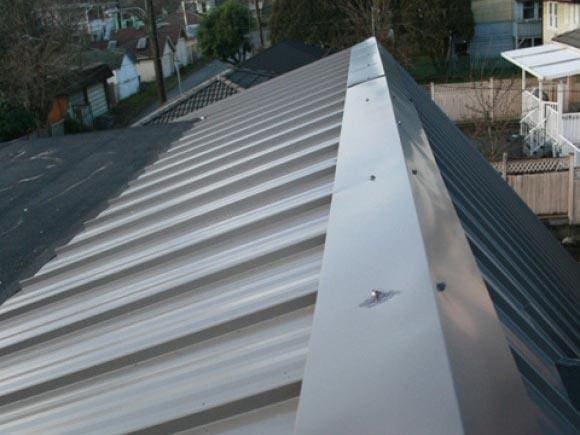The durability and longevity of a metal roof can’t be trumped by traditional asphalt, wood or clay roofing materials. This type of roof is also better for the environment when it’s measured in terms of recyclability and energy efficiency. While many people would love to top their foundations off with roofs made of copper, aluminum, tin or galvanized steel, the price and difficulty finding trained metal roofing contractors often makes them shy away from the decision.
Table of Contents
Longevity, Expense and Durability
When home and business owners opt for metal roofing, they do so because the material is long-lasting and hassle-free. When a metal roof is properly installed, it can last anywhere from 30 to 60 years, whereas a roof made from asphalt or other materials will only last about 20 years.
When property owners opt for metal roofing, they don’t have to worry about whipping winds blowing section of it into their neighbors’ yards. This type of material can also withstand harsh weather, so it won’t deteriorate in extreme heat or cold.
Although metal roofing materials won’t break down in extreme temperatures, it can contract and expand, causing the fasteners to loosen. This can lead to leaks in various places on the roof. With the exception of a fresh coat of paint and possible leak repairs, a metal roof typically needs very little maintenance during its lifetime.
Environmental Impact and Installation
Although a metal roof lasts for decades, it is expensive to install. Depending on the type of metal used, installation can cost anywhere from $12,000 to $14,000 dollars for a one-story building. This is often a turnoff for people who can’t handle the upfront expense.
Environmental buffs feel metal roofing is a worthwhile investment since the material is recyclable and it won’t clutter up landfills. When the metal is removed from the roof, it can be melted down and reused for something else.
In addition, this type of roofing reflects the sun’s energy, so it can reduce attic temperatures and cut monthly utility bills. This in turn, reduces air conditioner load and lowers the carbon footprint on the environment.
Unlike traditional shingles, which install in overlapping rows, metal roofing is installed in sheets. For this reason, not every roofing contractor has the skill to install these roofs properly. If a metal roof owner ends up needing repairs down the line, he or she will likely have difficulty finding a contractor to tackle the task.
Metal roofing is an excellent way to add value to a home or business. It is long-lasting, energy-efficient and gentle on the environment. However, these benefits are often negated by the exorbitant cost, as well as the fact that metal roofing contractors are sparse in some areas.

Brad Gordon and his team of professionals have been installing roofing, waterproofing and architectural sheet metal systems in the Greater Vancouver area for over 20 years.

